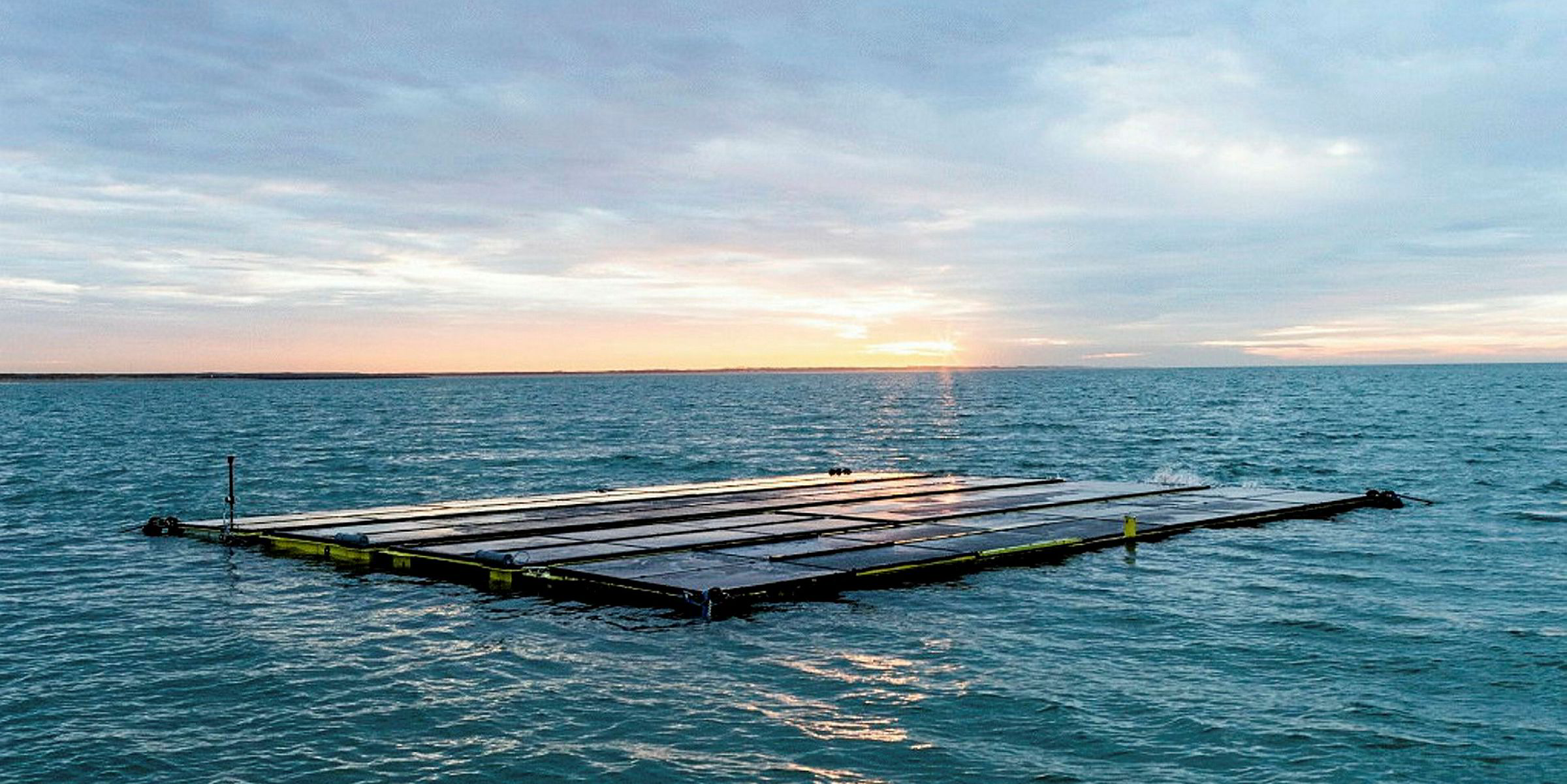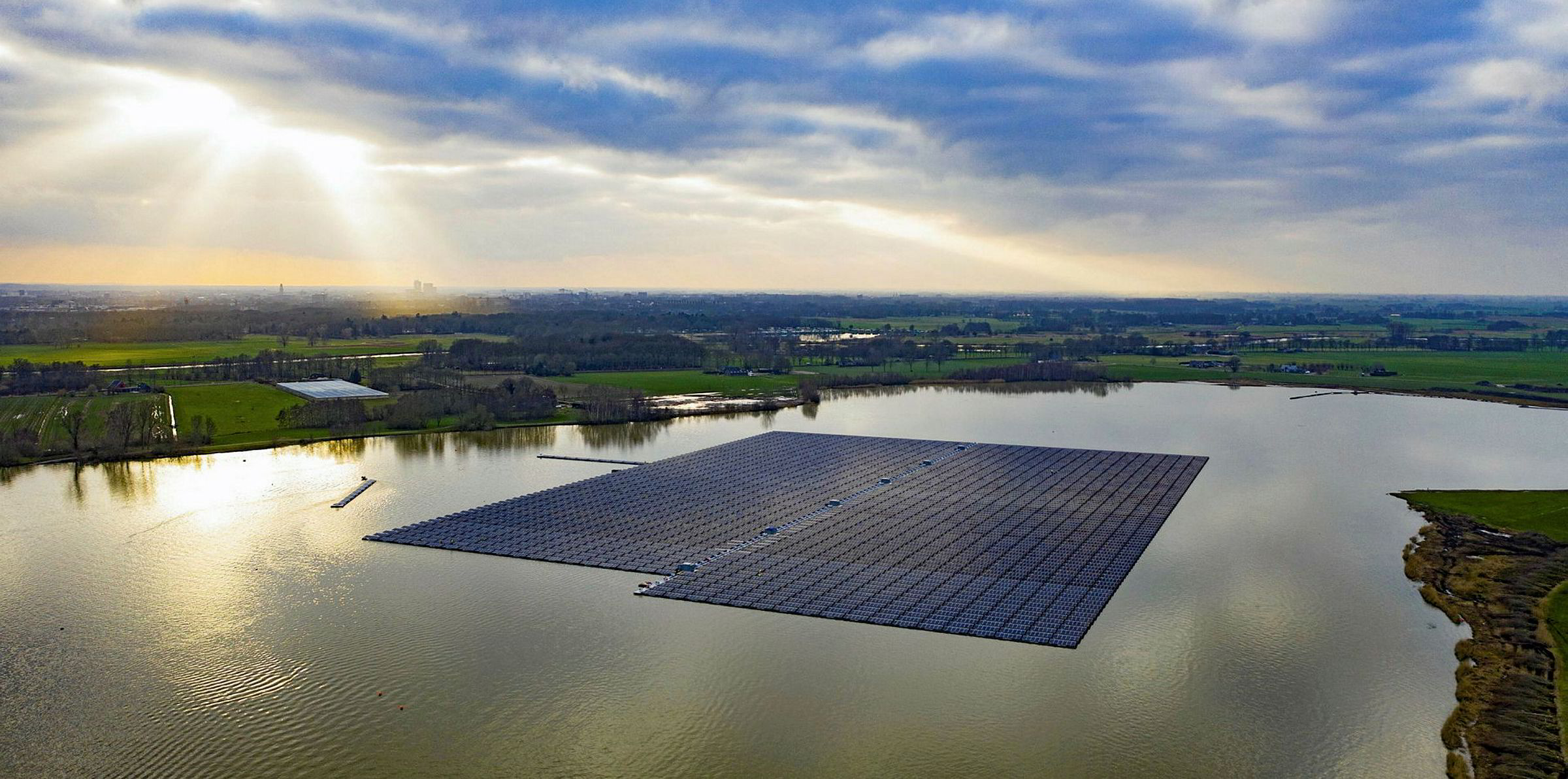Energy consultancy giant DNV GL has given its seal of approval to an innovative large-scale floating solar power technology being developed by Norway’s Ocean Sun, as the design heads for its first full-scale installation as part of a project on a hydropower in Albania.
Being engineered for operations in coastal waters and on man-made reservoirs based on a design that integrates aspects of open-sea salmon farm architecture, the Ocean Sun system uses modified silicon PV modules mounted on a flexible hydro-elastic floating membrane.
DNV GL’s so-called “conformity statement” – which verifies the design methodology of the floating solar structure and ensures it complies with various standards and recommended practices, including in this case for Norwegian aquaculture – clears the way for a technology qualification process involving review of the Open Sun concept’s energy production, PV cells, electrical system and membrane.
The Norwegian outfit has already built five systems, the oldest of which nearly three ago, of a range of sizes totalling 300kW, but the 2MW project at the Banja Dam, operated by compatriot utility Statkraft, is by far the biggest and will help further accelerate one of the world’s fastest-emerging renewables sectors.
“Hydropower operators have large plans to invest in floating solar solutions in their man-made reservoirs and hook it up to their already existing grid connections, but they need to be sure that the floating solar structure is sustainable, durable and safe,” said Ocean Sun CEO Børge Bjørneklett.
“This verification by DNV GL is a vital first step in demonstrating Ocean Sun’s readiness for deploying robust floating solar solutions.”
Prajeev Rasiah, executive vice president for DNV GL’s energy business in Northern Europe, Middle East and Africa, said: “Developing and expanding floating solar power opens tremendous new opportunities in providing the world with sufficient renewable energy.
“The conformity statement is the first of its kind and was issued following a thorough verification process which sets the standard for the expansion of floating solar globally and opens opportunities to scale up solar energy production around the world.”
A 2018 World Bank report on floating solar – which centred on hydropower plant, water reservoir and in-land installations – concluded the potential of the technology “even under conservative assumptions” to be 400GW. With coastal and open-sea build-out, the market would be “enormous”, said DNV GL.
Though floating solar remains an emerging technology, in-land arrays are being seen as an increasingly attractive option for large-scale PV deployment on reservoirs and alongside hydropower facilities, especially where land is limited.
The largest such project currently is a 150MW development in Anhui, China, but, as Recharge has reported, that is soon set to be overshadowed by massive developments elsewhere in the world, including a 1GW plant in India and an sprawling 2.9GW complex off South Korea .
The world largest floating solar array outside China – BayWa’s 27.4MW Bomhofsplas project in the Netherlands – is slated to be up and running later this month , according to its developer.
Europe has taken strides in the recent months to expand the market for ‘high wave’ floating PV with several projects being developed for open-sea sites.
Developer Oceans of Energy’s Zon-op-Zee (Solar-at-Sea) project, the world’s first offshore solar array, “remained stable and intact” after weathering winds of up to 62 knots and waves over five metres high in the Dutch North Sea during the Ciara bomb cyclone late last year.
DNV GL’s Energy Transition Outlook reveals that society will need to grow solar power by more than ten times to 5TW in order to close the emissions gap, the difference between the forecasted rate at which our energy system is decarbonizing and the pace we need to reach, to limit global warming to well below 2°C as set out by the Paris Agreement.





